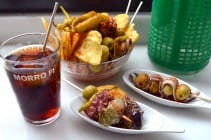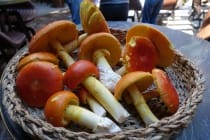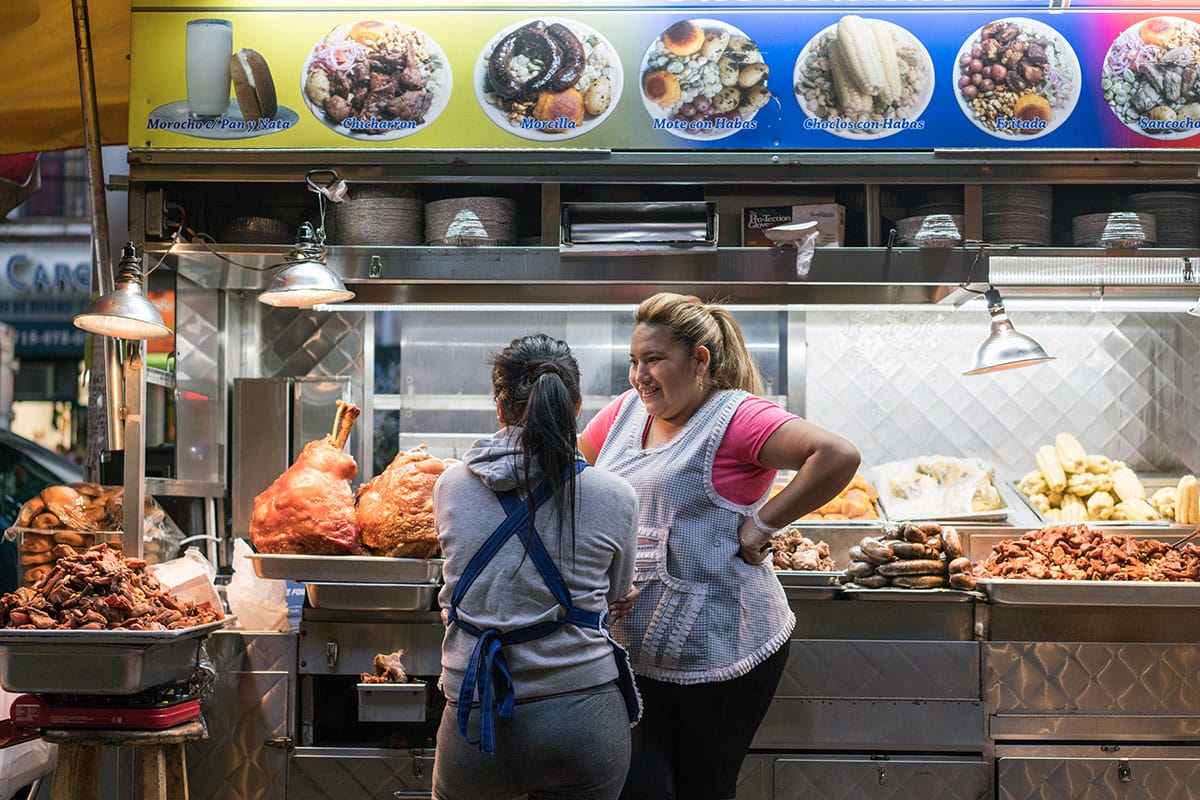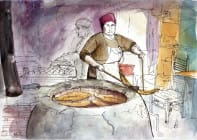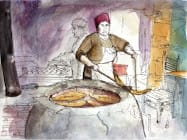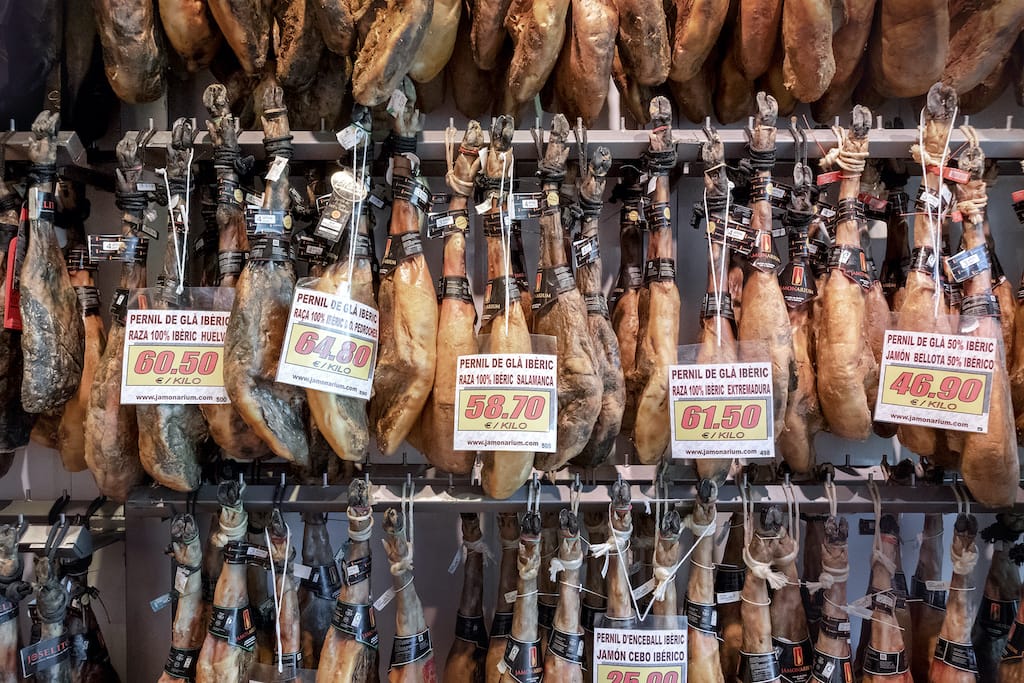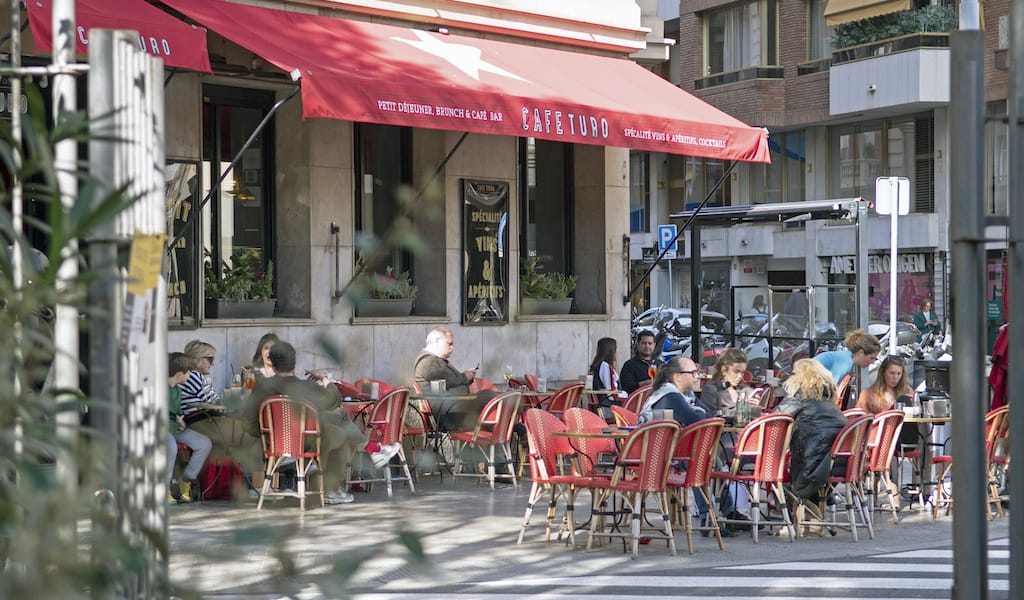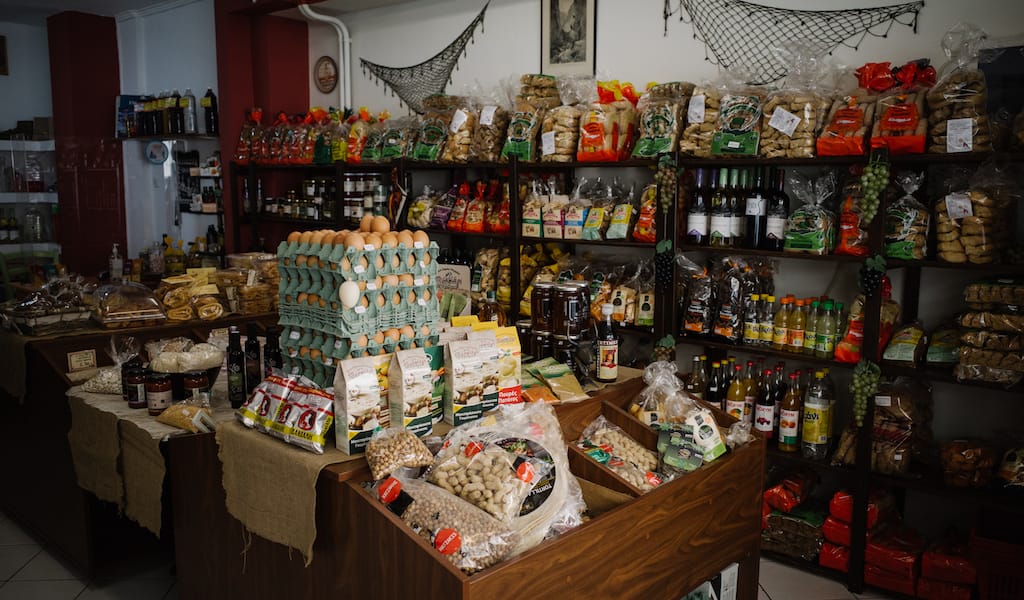Ham is one of Spain’s best-known culinary treasures, and different types of the cured meat offer their own flavors and characteristics depending on the breed of pig, how the animal has been fed and raised and how its meat has been processed and cured. The wide selection of ham in Barcelona can be a bit intimidating, but it’s easy to decipher and make your selection with a little local know-how.
The two major categories of Spanish jamón serrano ham are jamón del país and jamón ibérico. Serrano refers to the ancient technique – dating back to Roman times – of curing the ham in salt and then dry-aging it to extend preservation and increase the flavor and umami. The jamón del país comes from white or pink pigs normally raised on farms and fattened on grain, while the ibérico comes from the Iberian pig breed and is made according to very specific practices, yielding a special and often costly product. The serrano ham marked as “de bodega” is aged around 9-12 months, while ham labeled “reserva” is aged around 12-14 months and the “gran reserva” is aged for 15 moths or more.
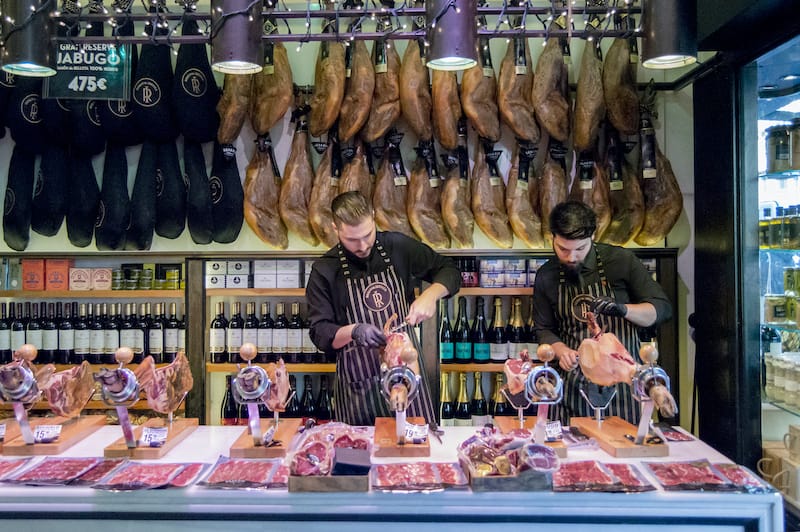
The Iberian pig is an ancient breed of (usually) black pig that requires much longer to reach maturity and the right weight for slaughter than conventional breeds. Spain’s best pork products – not just cured ham but also fresh cuts – come from pigs raised this way. The ham made from the black pig, pata negra (“black foot”), is easy to recognize by the black hoof, the distinctive shape of the leg and the slightly darker color of the meat and fat. This ham is normally cured for a minimum of 24 months, depending on the size, and final quality desired. In the mouth it offers a unique and complex sweet-and-salty flavor with nutty notes and very long, luxurious streak of high oleic fat, and an incredibly silky, melt-in-the-mouth texture that elevates its enjoyment.
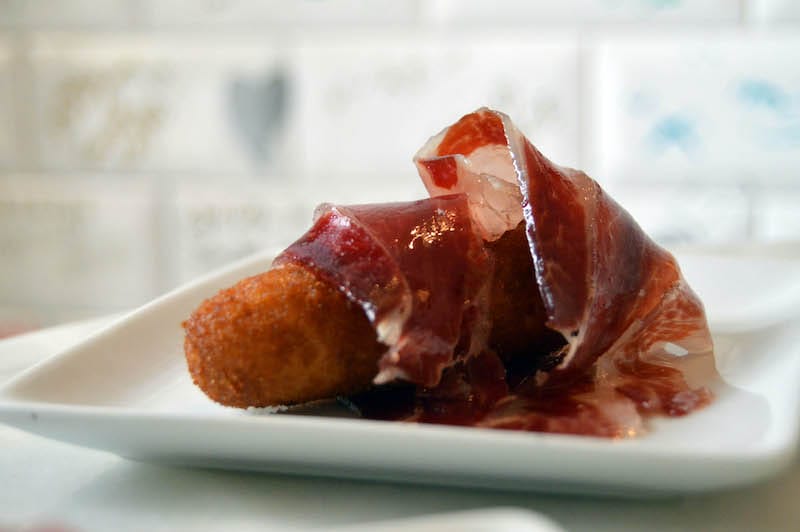
The word “jamón” generally refers to the hind leg of the pig, but the front legs are cured or cooked in the same way. When cured, the front leg is called the paleta or paletilla in Spanish and espatlla in Catalan. These tend to be smaller, less tender and juicy, often sold without the bone and are less expensive than the hind legs.
Iberian pigs can be reared using industrial methods, but for the best meat, the pigs are raised in dehesas, or oak forests, where the animals can roam among the trees and forage for wild fruit, acorns (bellotas in Spanish) and grass. The official code to recognize the different categories was established by the Spanish Ministry of Agriculture in 2014, and uses colored zip ties around the hoof of the pig: black for Ibérico de bellota 100% (pure Iberian, acorn-fed); red for Ibérico de bellota 75% or 50% pure (meaning one of the parent or grandparents of the pig was not Iberian), but totally free-range and acorn fed. Green for Ibérico de Cebo de Campo, 50% Iberian breed, that is partially fodder fattened and partially acorn fed in the fields. Finally, the white tag is for Ibérico de Cebo, intensively fodder fattened on a farm and 50% pure-breed.
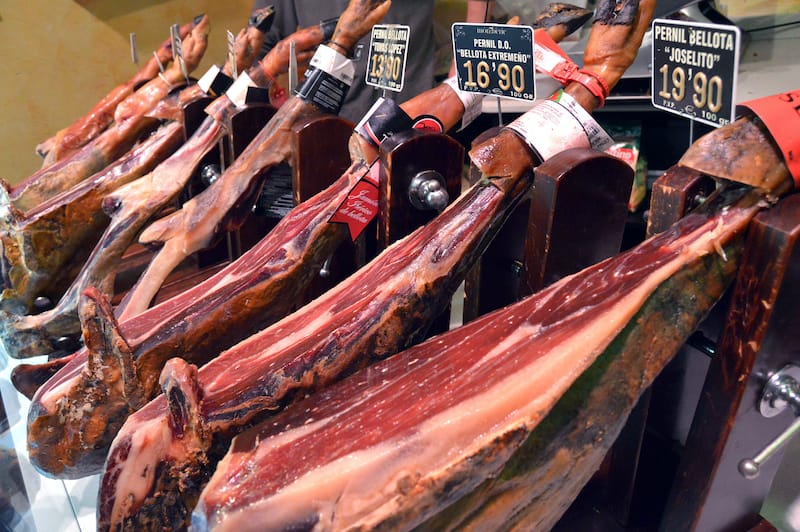
Jamón ibérico is produced mostly in the central-western and southern parts of Spain, and the eastern center of Portugal. Protected designations of origin guarantee the quality of the ham and the expertise that went into making them and include Salamanca (D.O. Guijuelo), Cáceres and Badajoz (D.O. Dehesa de Extremadura), Huelva (D.O. Jamón de Huelva) and Córdoba (D.O. Los Pedroches).
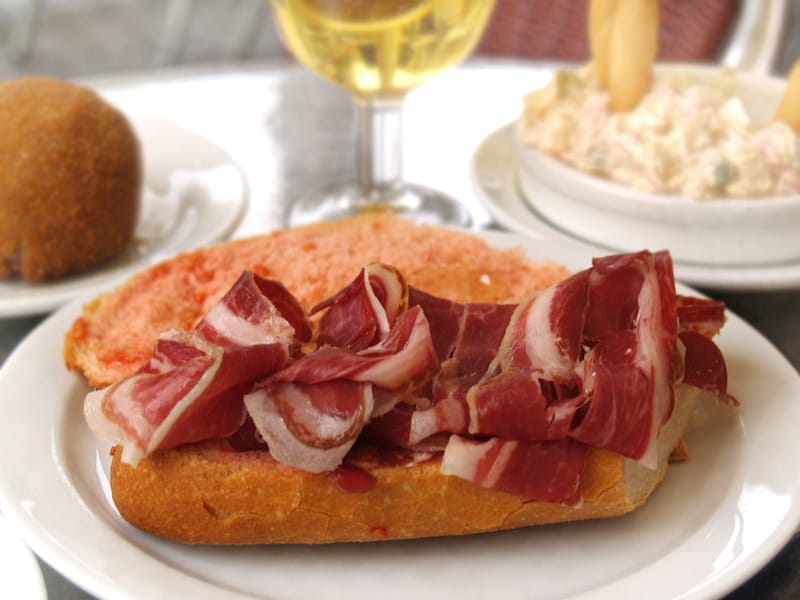
You can find jamón ibérico in bars, restaurants and food shops all over Barcelona (and the rest of Spain and Portugal, for that matter). Here in the city you can purchase ham in all kinds of xarcuterias (specialty meat shops) and big markets. Aroma Ibèric is one of the specialized xarcuteries in the Boqueria market (stalls 183-5), or Can Marti Carles, stalls 5-7 in the Santa Caterina market. There are also chains of specialty ham shops which you can find all over Spain; some of the biggest names, especially in the city center, are Enrique Tomás and Reserva Ibérica, both which have a tasting area inside. Barcelona’s traditional local groceries called colmados are also well known for their great selection of Iberian ham. Vila Viniteca and Quilez are a couple of our favorites.
Below is a further selection of Catalan producers of high-quality Iberian products and their shops and restaurants where you can purchase or taste dishes, tapas or sandwiches with some of the best Ibérico de bellota in town:
Published on June 14, 2023
Related stories
April 8, 2024
BarcelonaWith its sloping streets and large, narrow buildings on the outskirts of the city, the Sant Gervasi-Galvany area once served as the site for the summer houses of the 19th-century Barcelonean bourgeoisie. These days, among a seemingly infinite number of cute little shops and kids running around dressed in private-school uniforms, Sant Gervasi-Galvany is a…
February 28, 2024
Food Tours NDQuick Bite: This full-day Istanbul market tour draws from our best-of list in the European side’s Karaköy neighborhood and the Asian Kadıköy, tied together by a Bosphorus crossing, visiting two markets on two continents. Our favorite Istanbul experiences include exploring the eateries in local markets and crossing the Bosphorus on the public ferry. The route for…
October 23, 2023
AthensOn Crete, endowed with fertile soil and an enviable climate, devotion to the island’s culinary traditions runs deep. This is even the case for people who have family ties to Crete but did not live there themselves, like Dimitris Katakis, who runs To Mitato tou Psiloriti, a small Cretan deli in Athens. In 1950 his…

















